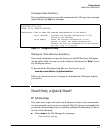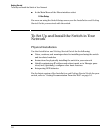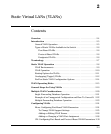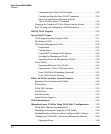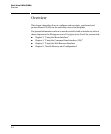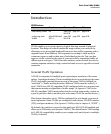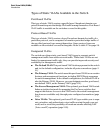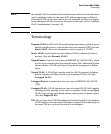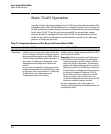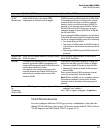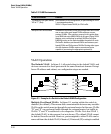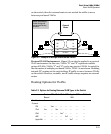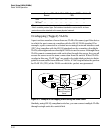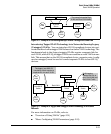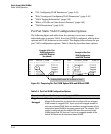
Static Virtual LANs (VLANs)
Terminology
Note In a multiple-VLAN environment that includes some older switch models there
may be problems related to the same MAC address appearing on different
ports and VLANs on the same switch. In such cases the solution is to impose
some cabling and VLAN restrictions. For more on this topic, refer to “Multiple
VLAN Considerations” on page 2-20.
Terminology
Dynamic VLAN: An 802.1Q VLAN membership temporarily created on a port
linked to another device, where both devices are running GVRP. (See also
Static VLAN.) For more information, refer to chapter 3, “GVRP” .
Static VLAN: A port-based or protocol-based VLAN configured in switch
memory. (See also Dynamic VLAN.)
Tagged Packet: A packet that carries an IEEE 802.1Q VLAN ID (VID), which
is a two-byte extension that precedes the source MAC address field of an
ethernet frame. A VLAN tag is layer 2 data and is transparent to higher
layers.
Tagged VLAN: A VLAN that complies with the 802.1Q standard, including
priority settings, and allows a port to join multiple VLANs. (See also
Untagged VLAN.)
Untagged Packet: A packet that does not carry an IEEE 802.1Q VLAN ID
(VID).
Untagged VLAN: A VLAN that does not use or forward 802.1Q VLAN tagging,
including priority settings. A port can be a member of only one untagged
VLAN of a given type (port-based and the various protocol-based types).
(See also Tagged VLAN.)
VID: The acronym for a VLAN Identification Number. Each 802.1Q-compliant
VLAN must have its own unique VID number, and that VLAN must be given
the same VID in every device in which it is configured.
2-7



